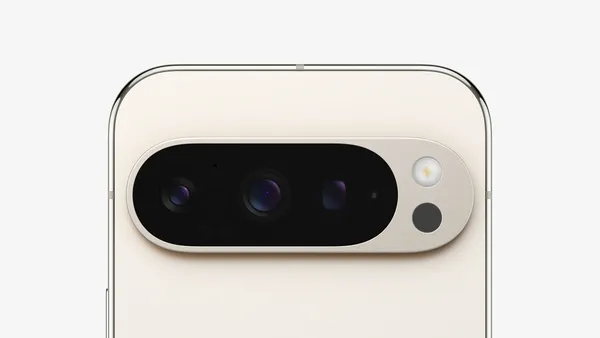 Here’s a look at the upgraded cameras and AI photography features on the latest Pixel phones.
Here’s a look at the upgraded cameras and AI photography features on the latest Pixel phones.
9 things to know about Pixel 9 cameras
 Here’s a look at the upgraded cameras and AI photography features on the latest Pixel phones.
Here’s a look at the upgraded cameras and AI photography features on the latest Pixel phones.
 Here’s a look at the upgraded cameras and AI photography features on the latest Pixel phones.
Here’s a look at the upgraded cameras and AI photography features on the latest Pixel phones.
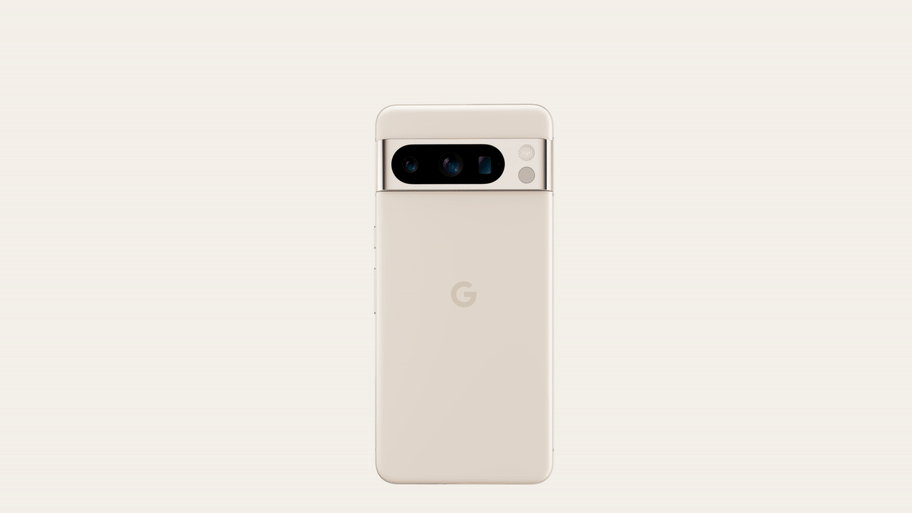 Upgrades to the camera and Google Tensor G3 on Pixel 8 and Pixel 8 Pro bring new photo and video capabilities into the palm of your hands.
Upgrades to the camera and Google Tensor G3 on Pixel 8 and Pixel 8 Pro bring new photo and video capabilities into the palm of your hands.
Our recently announced Pixel 7 and Pixel 7 Pro phones deliver the best photo and video experience we’ve ever had on a Pixel phone. There’s a lot of hardware, software and machine learning that go into our computational photography features. Here’s a look at 10 new things Pixel Camera can do and how we made them happen.
Real Tone makes our camera work more equitably for people of every skin tone. With the help of partners around the world, we’ve created over 10,000 new portraits on Pixel 7 to improve Real Tone, and we’ve worked with Diversify Photo to evaluate our progress. Thanks to them, Pixel 7 and Pixel 7 Pro have the most inclusive smartphone camera.
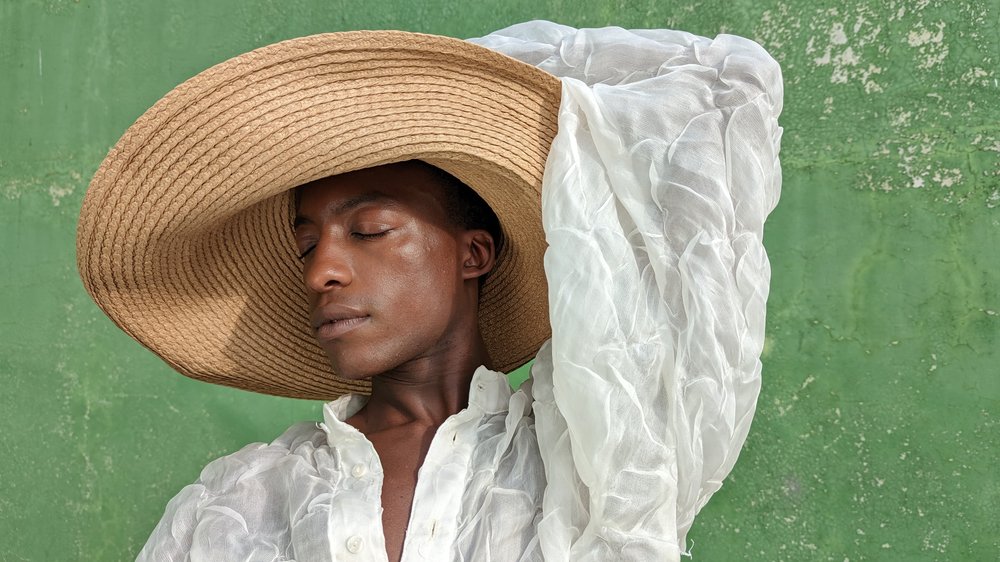
Real Tone on Pixel 7 & Pixel 7 Pro
For people who are blind or low-vision, Guided Frame provides a combination of audio cues with high-contrast animations and haptic feedback — that slight vibration you feel when tapping things on your phone — to help capture a selfie.
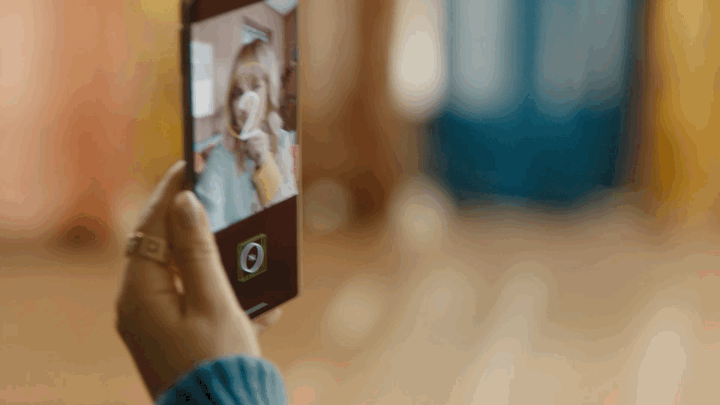
Guided Frame on Pixel 7 & Pixel 7 Pro
Now with Photo Unblur in Google Photos you can bring your blurry photos back to life and make your most treasured shots look as great as you remember — even if you took them on a different camera.

Photo Unblur on Pixel 7 & Pixel 7 Pro
In the darkest scenes, Night Sight photos are sharper than ever. Using updates to HDR+ with Bracketing and new ML techniques to reduce noise, your low-light photos will have less motion blur since exposures can be half as long as before.

Night Sight on Pixel 7 and Pixel 7 Pro
The Pixel 7 Pro has an upgraded ultrawide lens that is 21% wider than Pixel 7’s so you can fit more in the frame. Plus the ultrawide lens has autofocus, which powers Macro Focus. Simply move your phone close to your subject — like a flower — and the camera will automatically transition from the main camera to the ultrawide. This will allow Pixel 7 Pro to focus on a subject as close as three centimeters away, making small objects look life-size.
Super Res Zoom uses the inner crop of the 50-megapixel sensor, remosaicing, and HDR+ with Bracketing to create 12.5MP photos at 2x on both Pixel 7 and Pixel 7 Pro. The 2x photos are sharp with low noise and high resolution — similar to what a dedicated 2x telephoto camera would capture.

2x Super Res Zoom on Pixel 7 and Pixel 7 Pro
On the Pixel 7 Pro, the new 48-megapixel telephoto camera kicks in at 5x zoom, and Super Res Zoom — which uses the same process as above — creates stunning 12-megapixel photos at 10x, which look similar to what you’d get with a 10x optical zoom camera.
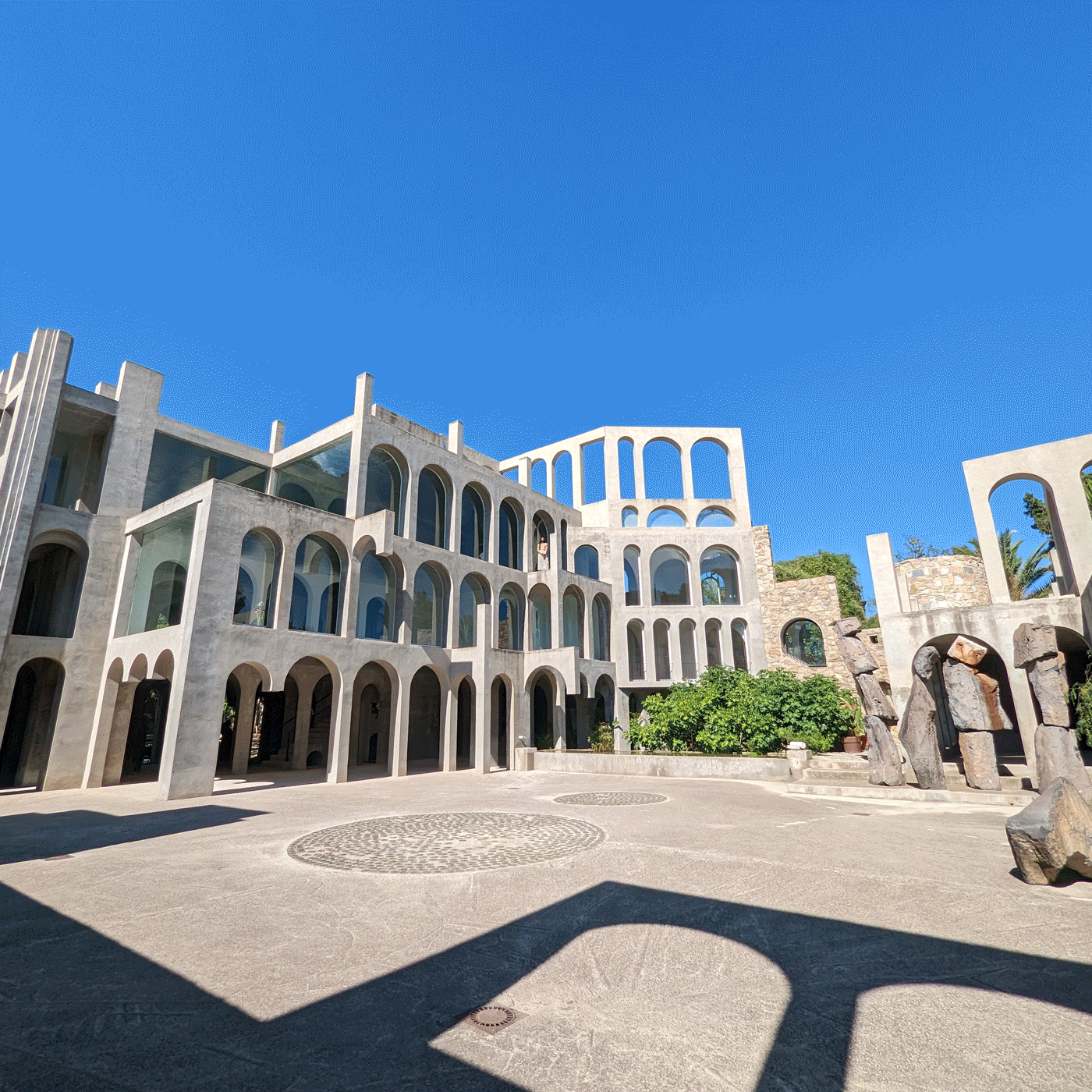
30x Super Res Zoom on Pixel 7 Pro
But sometimes the perfect composition calls for a zoom magnification that’s in between your smartphone’s optical cameras (1x and 5x for Pixel 7 Pro). What if you want a high-quality photo at 3x or 4x on Pixel 7 Pro? Traditionally, smartphone cameras perform digital zoom to cover these zoom magnifications, and this frequently results in lower-quality photos. To help you get great photos — even between the lenses — Pixel 7 Pro combines the next generation of Super Res Zoom’s 2x camera technologies described above, bonafide super resolution techniques, and a new ML model, which fills in the innermost section of the photo with detail from the 5x telephoto camera. The result is stunning photos – even if you’re taking them at 3x or 4x, which is before Pixel 7 Pro’s 5x telephoto lens would normally kick in.
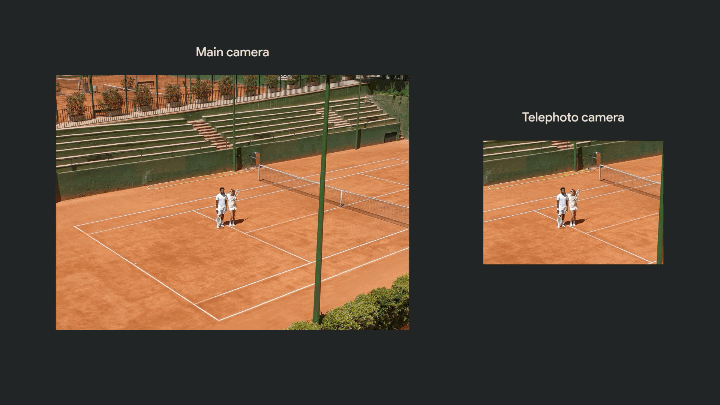
Multi-camera Super Res Zoom on Pixel 7 Pro
Pixel 7 Pro and Pixel 7 can record in 4K60 FPS on all of the cameras — even the front one — while also using Speech Enhancement to isolate the person speaking, as if they had a lapel mic. With so many improvements and refinements to video, including our third version of Active Stabilization, Pixel is an amazing tool for creators to achieve cinematic video, audio, and color in all kinds of lighting. Give the new Cinematic Blur mode a whirl, which uses similar technology as Portrait Mode to artfully blur the background in videos to keep your audience’s attention on the subject, or try capturing your memories in 10-bit HDR video, which is the perfect format for sunsets and fashion shoots with its smooth color gradients and high contrast. ‘
We’ve partnered with Snap so you can capture ultrawide front and rear photos and videos, and your videos will use video stabilization. Plus, you can use a new feature called Dual — that’s only on Pixel 7 and select Android phones — to simultaneously record video on your front and rear cameras to capture yourself and the scene in front of you.
Our recently announced Pixel 7 and Pixel 7 Pro phones deliver the best photo and video experience we’ve ever had on a Pixel phone. There’s a lot of hardware, software and machine learning that go into our computational photography features. Here’s a look at 10 new things Pixel Camera can do and how we made them happen.
Real Tone makes our camera work more equitably for people of every skin tone. With the help of partners around the world, we’ve created over 10,000 new portraits on Pixel 7 to improve Real Tone, and we’ve worked with Diversify Photo to evaluate our progress. Thanks to them, Pixel 7 and Pixel 7 Pro have the most inclusive smartphone camera.

Real Tone on Pixel 7 & Pixel 7 Pro
For people who are blind or low-vision, Guided Frame provides a combination of audio cues with high-contrast animations and haptic feedback — that slight vibration you feel when tapping things on your phone — to help capture a selfie.

Guided Frame on Pixel 7 & Pixel 7 Pro
Now with Photo Unblur in Google Photos you can bring your blurry photos back to life and make your most treasured shots look as great as you remember — even if you took them on a different camera.

Photo Unblur on Pixel 7 & Pixel 7 Pro
In the darkest scenes, Night Sight photos are sharper than ever. Using updates to HDR+ with Bracketing and new ML techniques to reduce noise, your low-light photos will have less motion blur since exposures can be half as long as before.

Night Sight on Pixel 7 and Pixel 7 Pro
The Pixel 7 Pro has an upgraded ultrawide lens that is 21% wider than Pixel 7’s so you can fit more in the frame. Plus the ultrawide lens has autofocus, which powers Macro Focus. Simply move your phone close to your subject — like a flower — and the camera will automatically transition from the main camera to the ultrawide. This will allow Pixel 7 Pro to focus on a subject as close as three centimeters away, making small objects look life-size.
Super Res Zoom uses the inner crop of the 50-megapixel sensor, remosaicing, and HDR+ with Bracketing to create 12.5MP photos at 2x on both Pixel 7 and Pixel 7 Pro. The 2x photos are sharp with low noise and high resolution — similar to what a dedicated 2x telephoto camera would capture.

2x Super Res Zoom on Pixel 7 and Pixel 7 Pro
On the Pixel 7 Pro, the new 48-megapixel telephoto camera kicks in at 5x zoom, and Super Res Zoom — which uses the same process as above — creates stunning 12-megapixel photos at 10x, which look similar to what you’d get with a 10x optical zoom camera.

30x Super Res Zoom on Pixel 7 Pro
But sometimes the perfect composition calls for a zoom magnification that’s in between your smartphone’s optical cameras (1x and 5x for Pixel 7 Pro). What if you want a high-quality photo at 3x or 4x on Pixel 7 Pro? Traditionally, smartphone cameras perform digital zoom to cover these zoom magnifications, and this frequently results in lower-quality photos. To help you get great photos — even between the lenses — Pixel 7 Pro combines the next generation of Super Res Zoom’s 2x camera technologies described above, bonafide super resolution techniques, and a new ML model, which fills in the innermost section of the photo with detail from the 5x telephoto camera. The result is stunning photos – even if you’re taking them at 3x or 4x, which is before Pixel 7 Pro’s 5x telephoto lens would normally kick in.

Multi-camera Super Res Zoom on Pixel 7 Pro
Pixel 7 Pro and Pixel 7 can record in 4K60 FPS on all of the cameras — even the front one — while also using Speech Enhancement to isolate the person speaking, as if they had a lapel mic. With so many improvements and refinements to video, including our third version of Active Stabilization, Pixel is an amazing tool for creators to achieve cinematic video, audio, and color in all kinds of lighting. Give the new Cinematic Blur mode a whirl, which uses similar technology as Portrait Mode to artfully blur the background in videos to keep your audience’s attention on the subject, or try capturing your memories in 10-bit HDR video, which is the perfect format for sunsets and fashion shoots with its smooth color gradients and high contrast. ‘
We’ve partnered with Snap so you can capture ultrawide front and rear photos and videos, and your videos will use video stabilization. Plus, you can use a new feature called Dual — that’s only on Pixel 7 and select Android phones — to simultaneously record video on your front and rear cameras to capture yourself and the scene in front of you.
Last week, we announced Pixel 6 and Pixel 6 Pro, and we spent some time introducing the new Pixel Camera, which gets a big boost from Google Tensor, Google’s first System on a Chip (SoC) designed specifically for Pixel. But there’s so much more to talk about — so we wanted to take some time to show you how the new camera uses the latest technology from the Pixel hardware and research teams as well as our Pixel software team.
From HDR+ to Night Sight, Pixel has a history of building state-of-the-art cameras using computational photography, and Pixel 6 and Pixel 6 Pro are no exception. Google Tensor allows us to combine new camera hardware with thoughtful software, as well as advancements in machine learning (ML).

Pixel 6 and Pixel 6 Pro camera bar.
For the first time ever, Pixel Camera has Live HDR+ enabled in all video modes – even 4K60 – and in popular social and chat apps, too. With Pixel 6 and Pixel 6 Pro, we drastically accelerated Live HDR+ by designing it directly into Google Tensor’s Image Signal Processor (ISP). Google Tensor enabled many other improvements to video, too, including real-time tone mapping of people and upgrades to stabilization.

Google Tensor enables Live HDR+ in video.
Pixel 6 and Pixel 6 Pro have a larger main rear camera that can capture 2.5x as much light as Pixel 5, so your Night Sight photos will be sharper and more detailed than ever. The larger camera works with a new laser detect auto focus system and Google Tensor’s ISP, which use new motion detection algorithms to capture shorter exposures that aren’t as blurry.
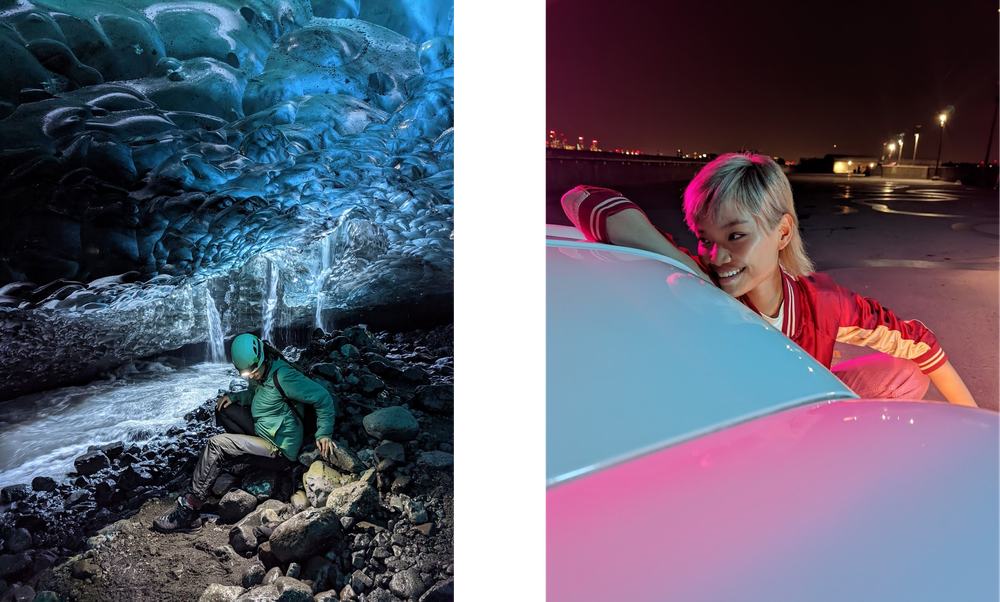
The new main sensor captures 2.5x as much light as ever before.
With Real Tone, Pixel 6 and Pixel 6 Pro are designed for people of every skin tone, so that your portraits look authentic and true to life. Google Tensor enables an advanced ML-based face detection model that more accurately auto-exposes photos of people of color. We also updated our auto-white balance algorithm to detect and correct inaccurate skin tones, and, if you enable Frequent Faces, Pixel Camera will also learn how to better auto-white balance the people you photograph most-frequently.
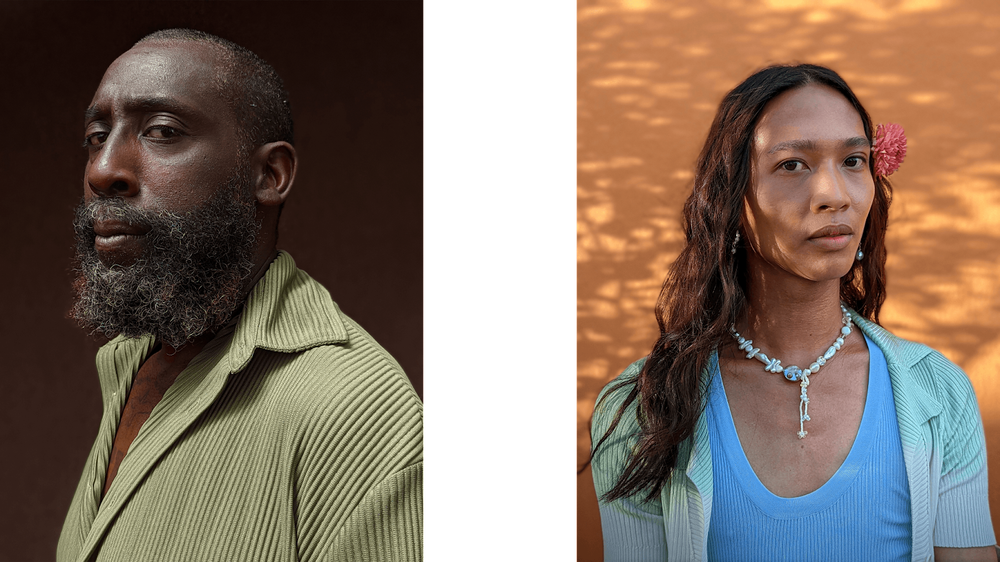
Real Tone helps everyone feel seen, no matter their skin tone.
With Face Unblur, more of your photos of people will come out crisp and sharp. If Google Tensor detects someone is moving quickly, Pixel 6 and Pixel 6 Pro simultaneously take a darker but sharper photo on the Ultra Wide camera and a brighter but blurrier photo on the main camera. Google Tensor then uses machine learning to automatically combine the two photos, giving you a well-exposed photo with a sharp face.
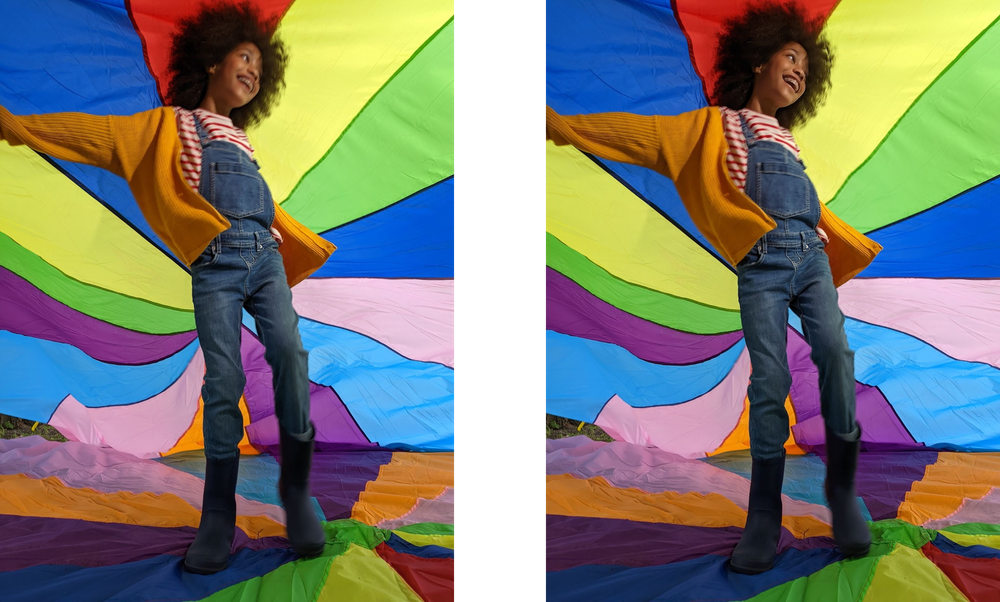
The upgraded Ultra Wide camera is used to take sharp photos of moving people, even when you don’t zoom out.
Sometimes, you want a bit of blur – with Motion Mode (now in Beta on Pixel 6 and Pixel 6 Pro), you can easily capture high-quality Action Pans and Long Exposures. Instead of using a sleight of hand or tripod, you can just press the Pixel Camera shutter button and rely on Google Tensor to handle motion vector calculations, frame interpolation, subject segmentation, hand-shake rejection, and blur rendering.

Action Pan and Long Exposure features in Motion Mode create artful blur of movement.
Pixel 6 Pro’s new telephoto camera uses an updated version of Super Res Zoom with HDR+ Bracketing so zoomed photos look sharp, not grainy. The sensor used in the 4x optical camera is larger than Pixel 5’s main sensor and it gathers more light, so fitting it in Pixel 6 Pro is no easy feat. It’s hidden inside the camera bar and uses a prism that bends the light so the lens can be oriented sideways.
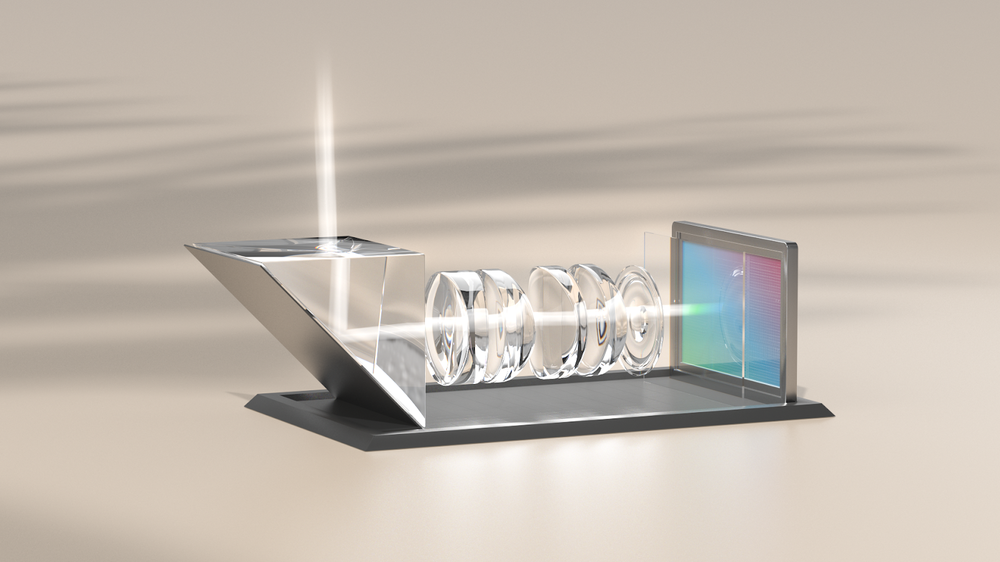
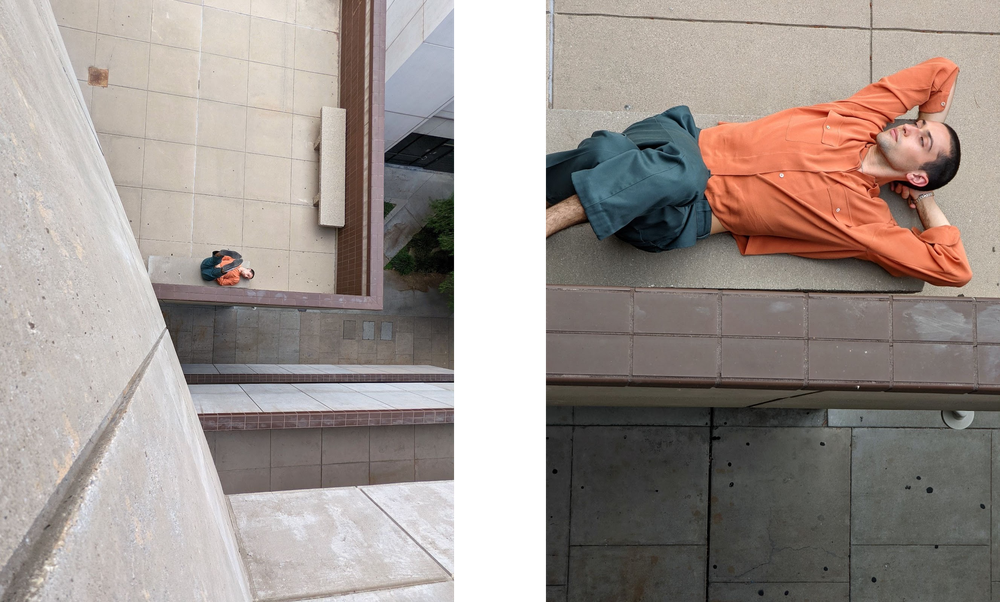
Pixel 6 Pro has the best zoom we’ve ever put in a Pixel phone.
Speaking of zoom, sometimes selfies feel too zoomed in, making it tricky to get a picture with all your friends or family. We built a new Ultra Wide selfie camera for Pixel 6 Pro that lets you ditch the selfie stick. When taking a selfie, you can zoom out by pressing the .7x button and capture photos of yourself or a group without extending your arm or fumbling around. And if you want to vlog on YouTube, Pixel 6 Pro’s selfie camera now supports 4K video recording and Speech enhancement mode, too! Pixel 6 uses Tensor’s TPU to simultaneously process audio and visual cues to isolate speech. It can reduce background noise up to 80% in noisy environments.
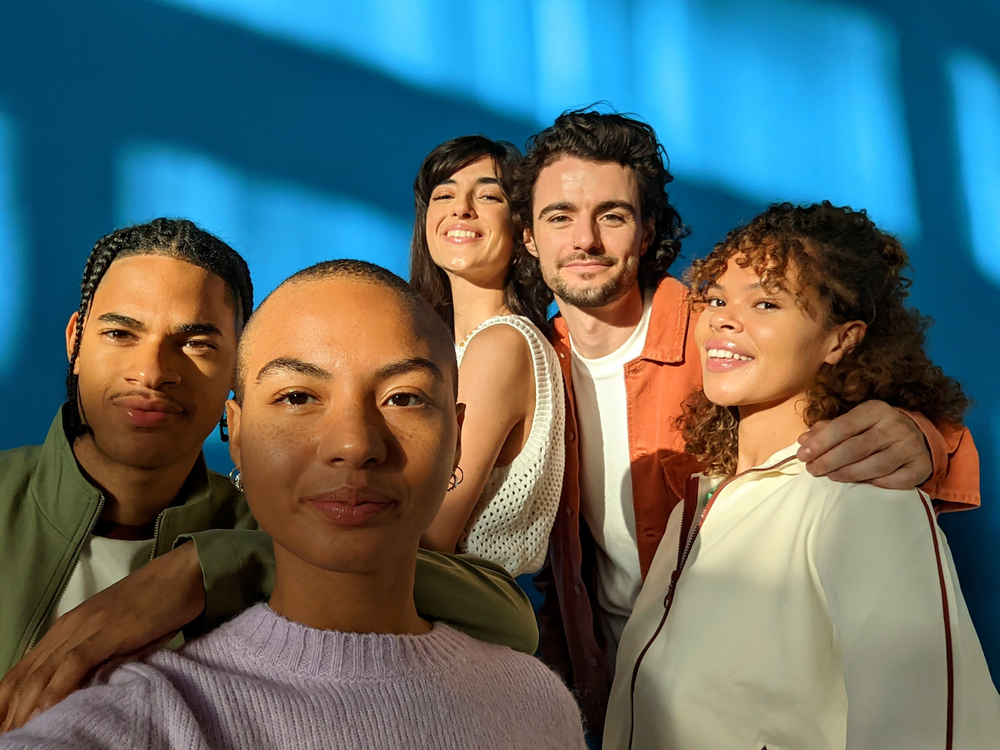
Pixel 6 Pro lets you zoom out to .7x on selfies so you can capture the entire crew.
Magic Eraser in Google Photos can help remove photobombers from your photos with the tap of a button. Using novel algorithms for confidence, segmentation, and inpainting, Magic Eraser can easily remove suggested distractions from your photos or let you select things you want to remove. Better yet, these machine learning models run on-device using Google Tensor, so you can even use Magic Eraser when you’re away from connectivity or when your photos haven’t backed up yet.
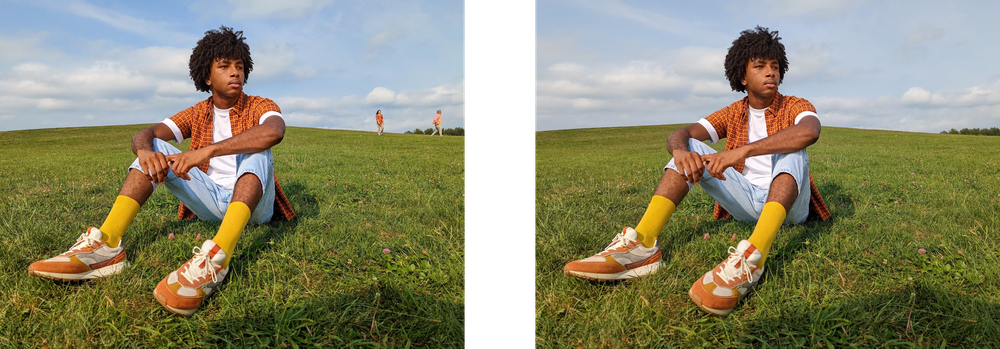
Magic Eraser removes distracting people in the background.
This is Pixel Camera's biggest hardware update ever, from the new Google Tensor chip to the debut of the camera bar. It's the best Pixel Camera we've built, and we can't wait to see what you do with it. Share your photos and videos on #TeamPixel through Snapchat, Instagram and Twitter.
This week the Pixel 2 and Pixel 2 XL, Google’s newest smartphones, arrive in stores. Both devices come with features like Now Playing, the Google Assistant, and the best-rated smartphone camera ever, according to DXO.
We designed Pixel 2’s camera by asking how we can make the camera in your Pixel 2 act like SLRs and other big cameras, and we’ve talked before about the tech we use to do that (such as HDR+). Today we’re highlighting a new feature for Pixel 2’s camera: portrait mode.
With portrait mode, you can take pictures of your friends and family (that includes your pets too!) that keep what’s important sharp and in focus, but softly blur out the background. This helps draw your attention to the people in your pictures and keeps you from getting distracted by what’s in the background. This works on both Pixel 2 and Pixel 2 XL, on both the rear- and front-facing cameras.
Technically, blurring out the background like this is an effect called “shallow depth of field.” The big lenses on SLRs can be configured to do this by changing their aperture, but smartphone cameras have fixed, small apertures that produce images where everything is more or less sharp. To create this effect with a smartphone camera, we need to know which parts of the image are far away in order to blur them artificially.
Normally, to determine what’s far away with a smartphone camera you’d need to use two cameras close to each other, then triangulate the depth of various parts of the scene—just like your eyes work. But on Pixel 2 we’re able to combine computational photography and machine learning to do the same with just one camera.
Portrait mode starts with an HDR+ picture where everything is sharp and high-quality.
Next, our technology needs to decide which pixels belong to the foreground of the image (a person, or your dog) and which belong to the background. This is called a “segmentation mask” and it’s where machine learning comes in. We trained a neural network to look at a picture and understand which pixels are people and which aren’t. Because photos of people may also include things like hats, sunglasses, and ice cream cones, we trained our network on close to a million pictures—including pictures with things like those!
Just creating two layers—foreground and background, with a hard edge in between them—isn’t quite enough for all pictures you’d want to take; SLRs produce blur that gets stronger with each fraction of an inch further from the thing that’s in sharp focus. To recreate that look with Pixel 2’s rear camera, we use the new Dual Pixel sensor to look through the left and right sides of the camera’s tiny lens at the same time—effectively giving us two cameras for the price of one. Using these two views we compute a depth map: the distance from the camera to each point in the scene. Then we blur the image based on the combination of the depth map and the segmentation mask.
The result? Portrait mode.
Portrait mode works a little differently on the front-facing camera, where we aren’t able to produce a depth map the same way we do with the more powerful rear-facing camera. For selfies, we just use our segmentation mask, which works particularly well for selfies since they have simpler compositions.
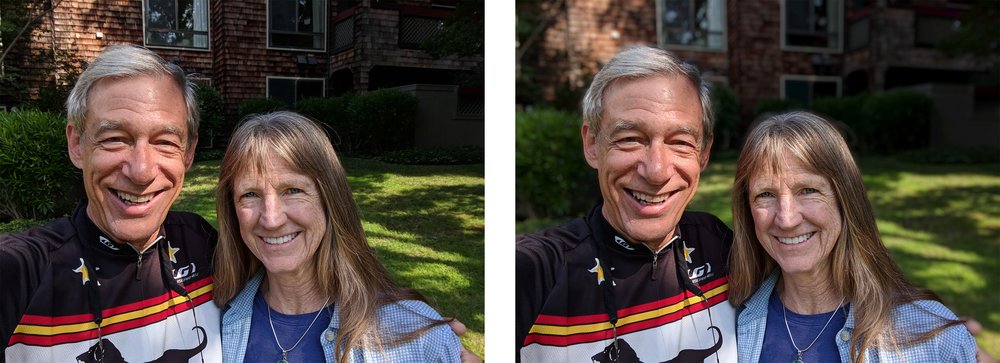
Portrait mode on the Pixel 2 is automatic and easy to use—just choose it from your camera menu then take your picture. You can use it for pictures of your friends, family, and even pets. You can also use it for all kinds of “close-up” shots of objects such flowers, food, or bumblebees (just don’t get stung!) with background blur.
Here are some tips for how to take great portraits using any camera (and Pixel 2 as well!):